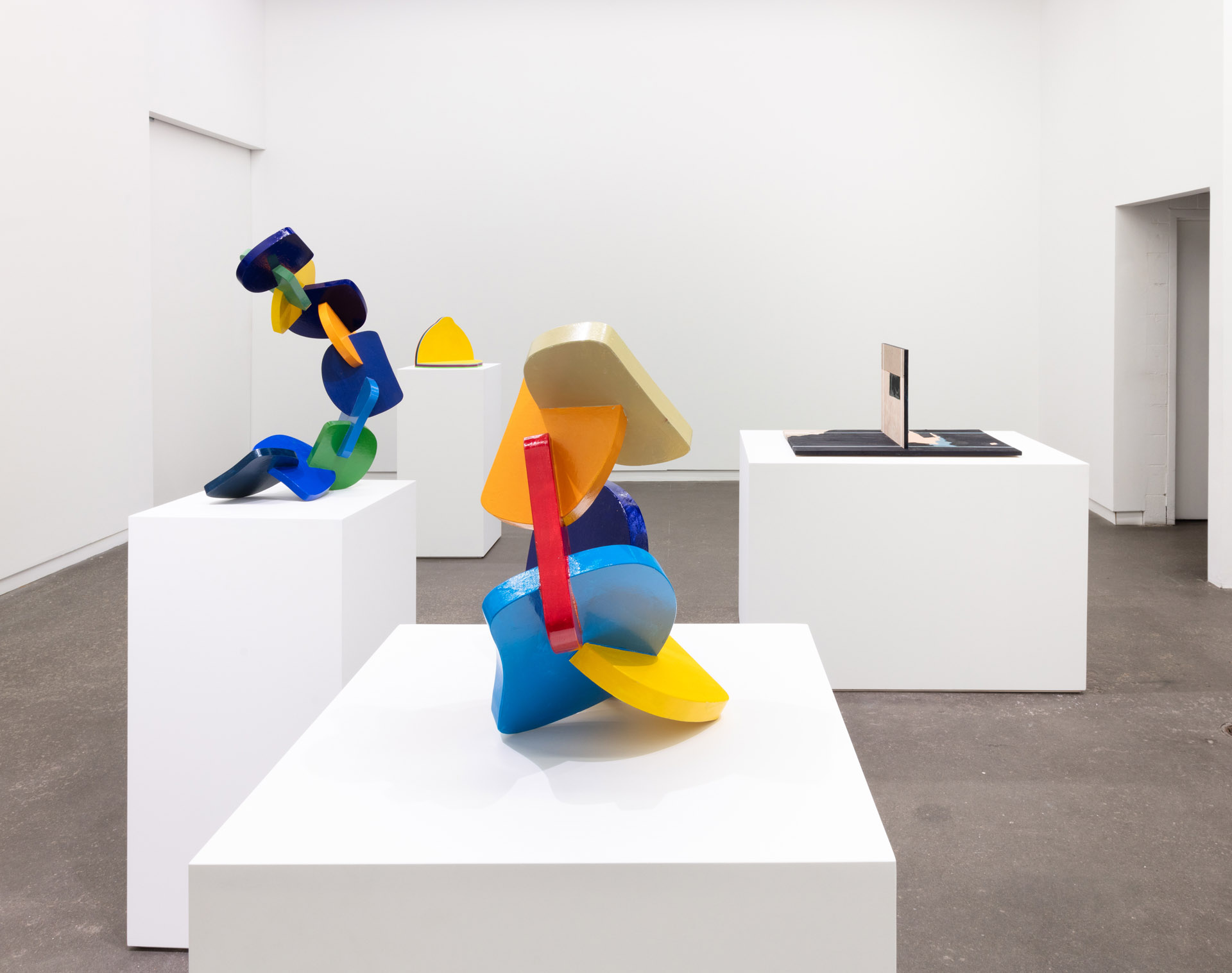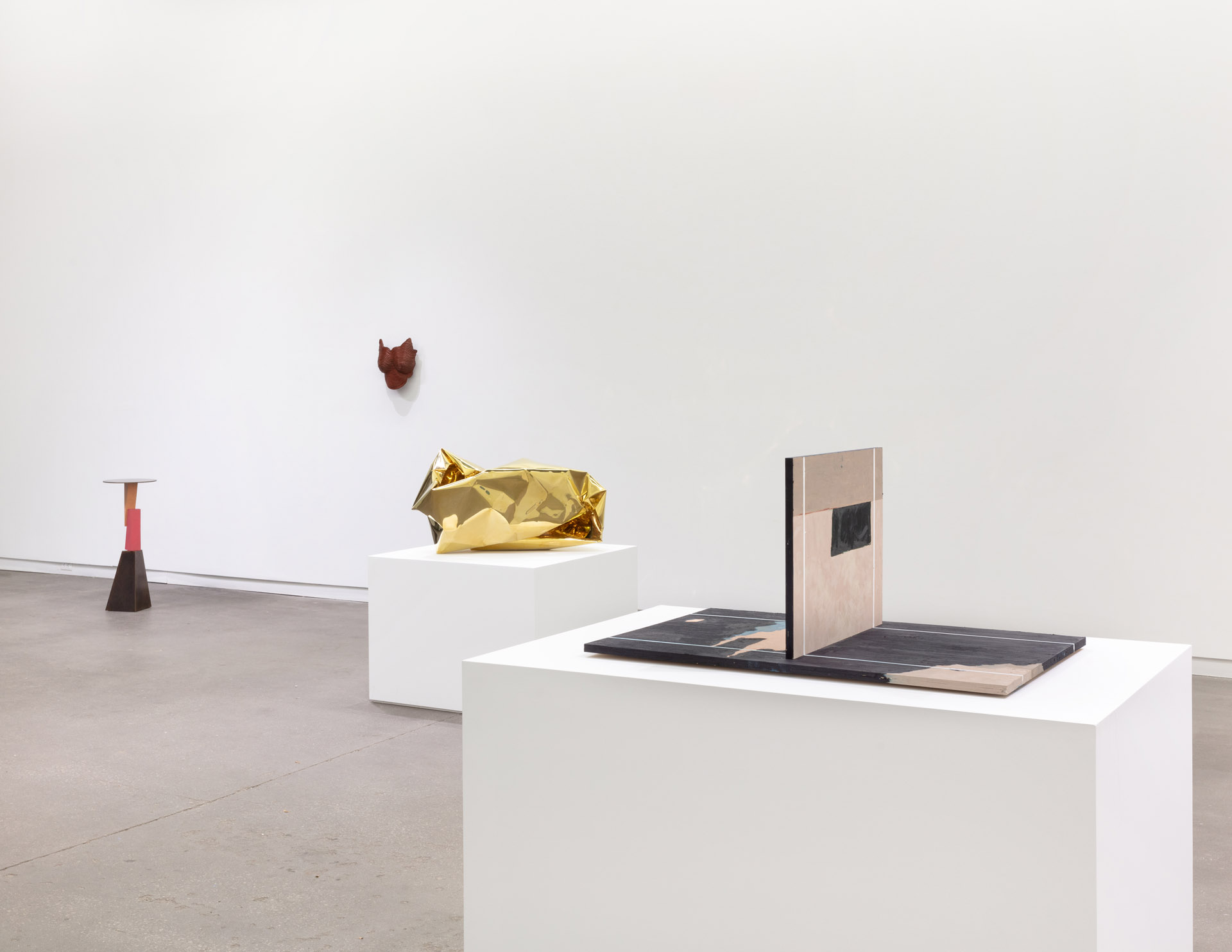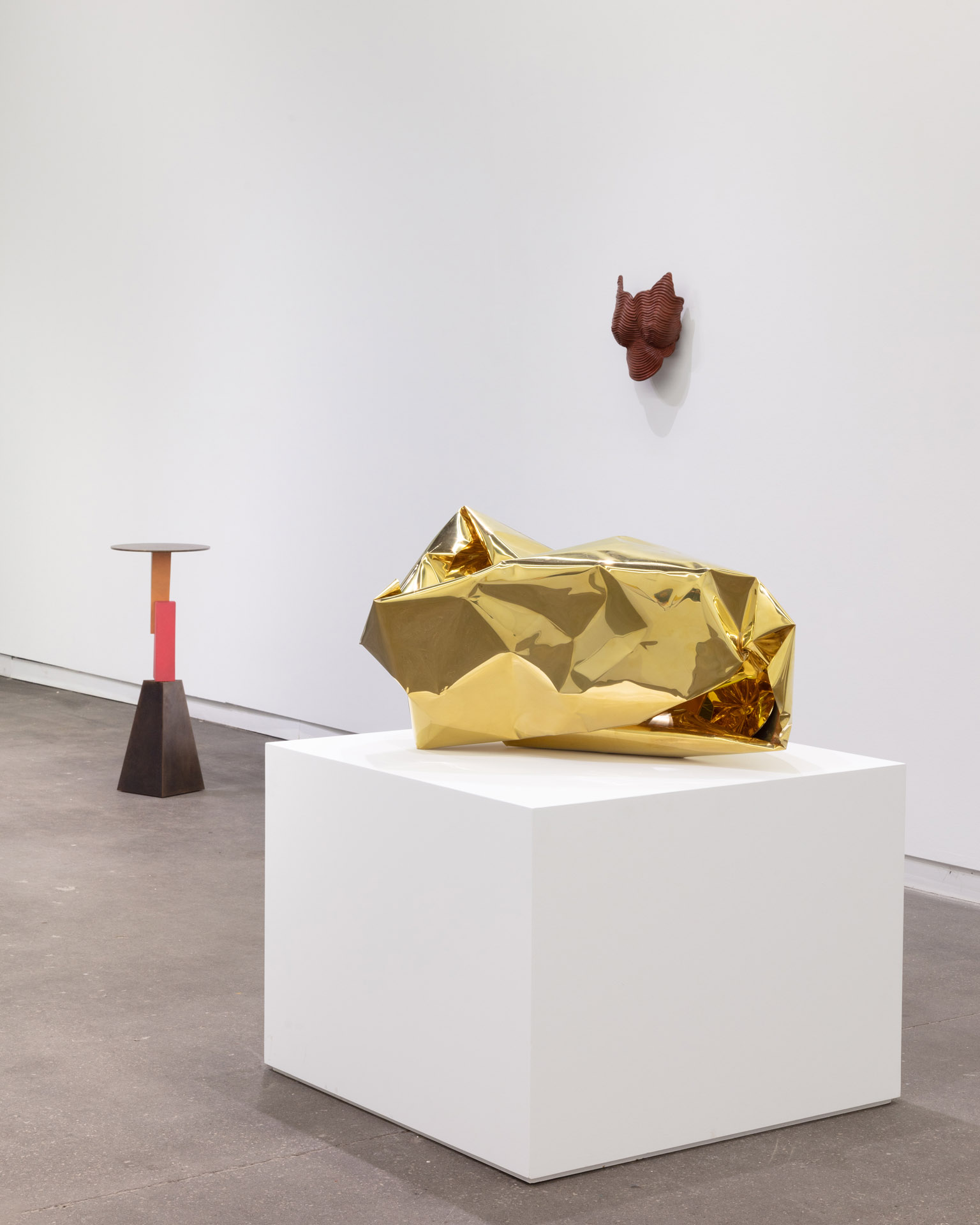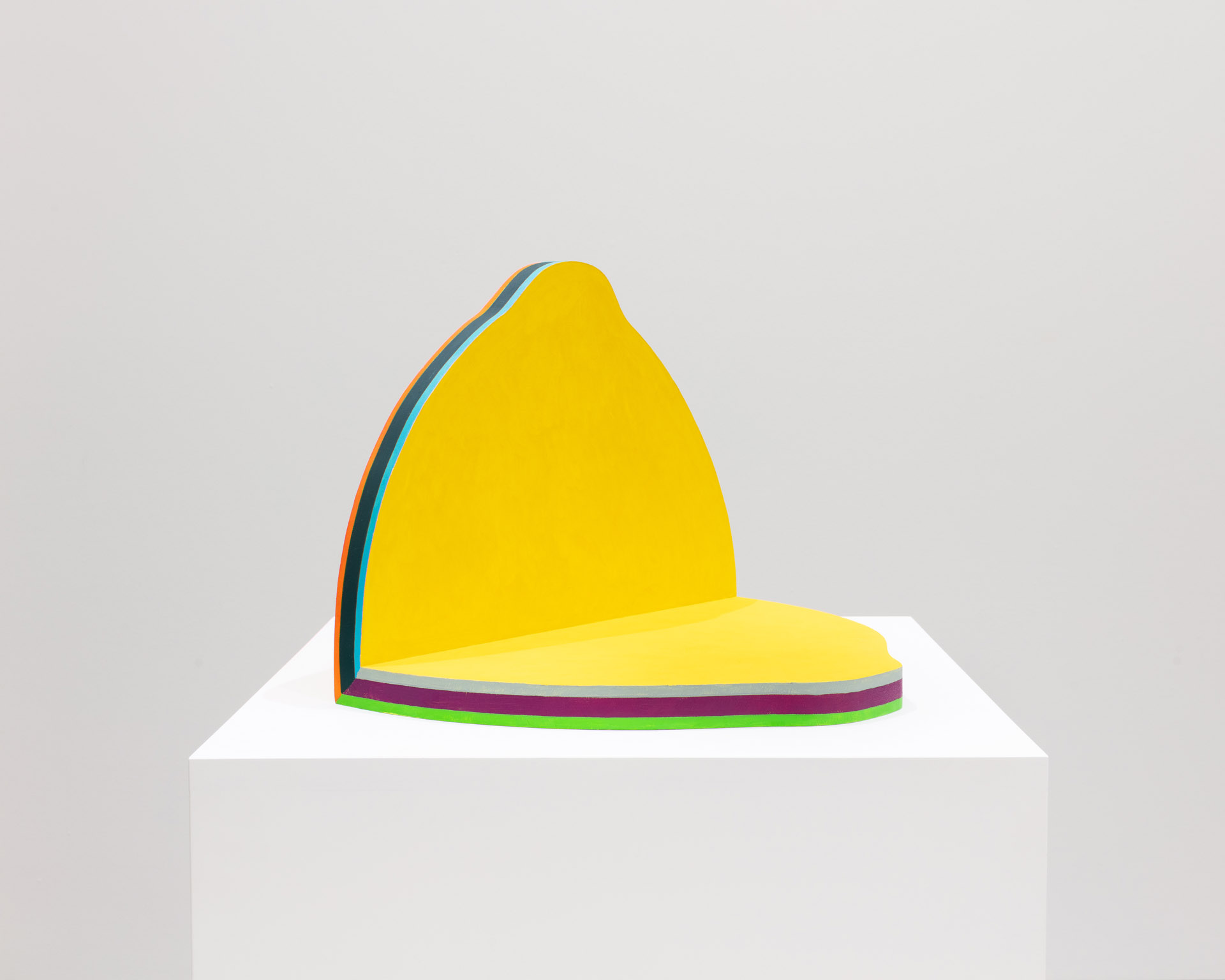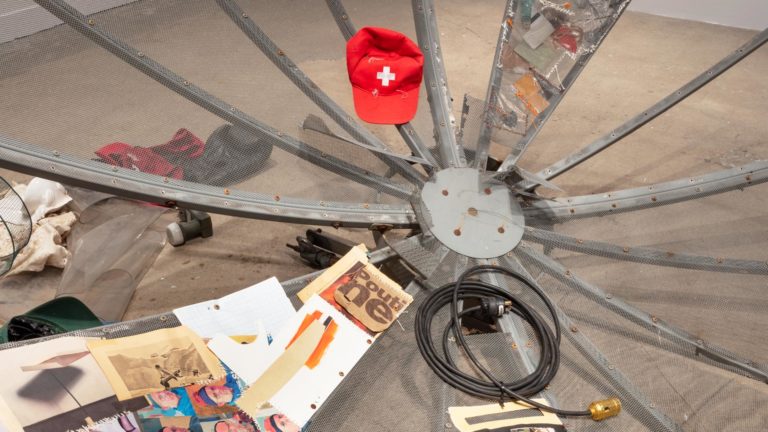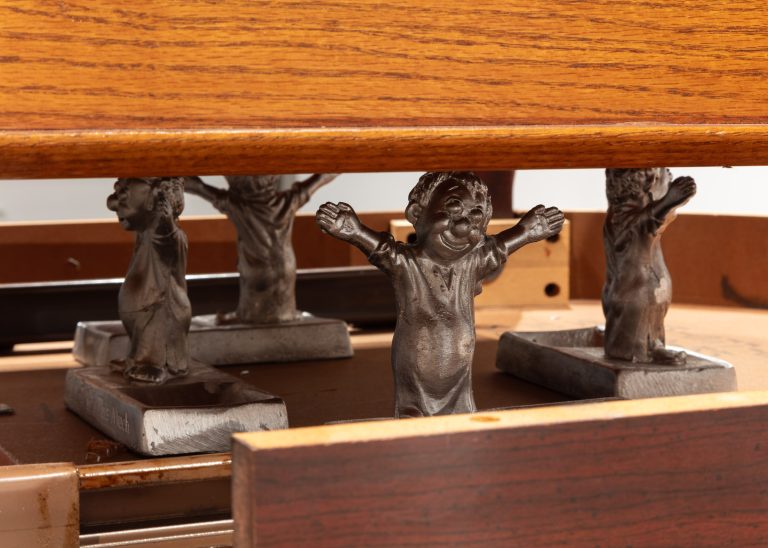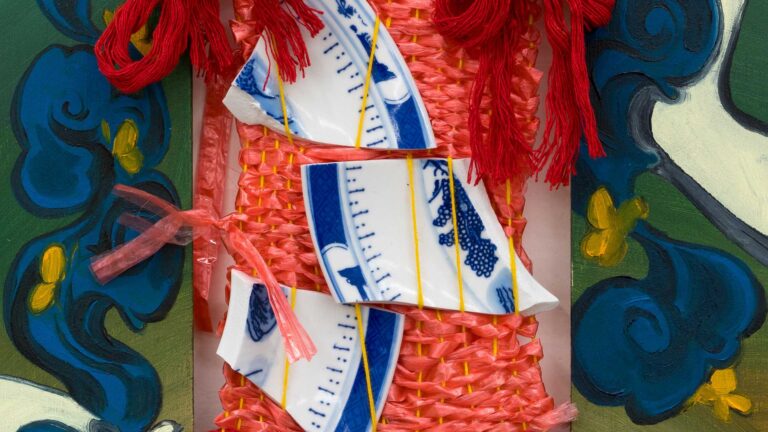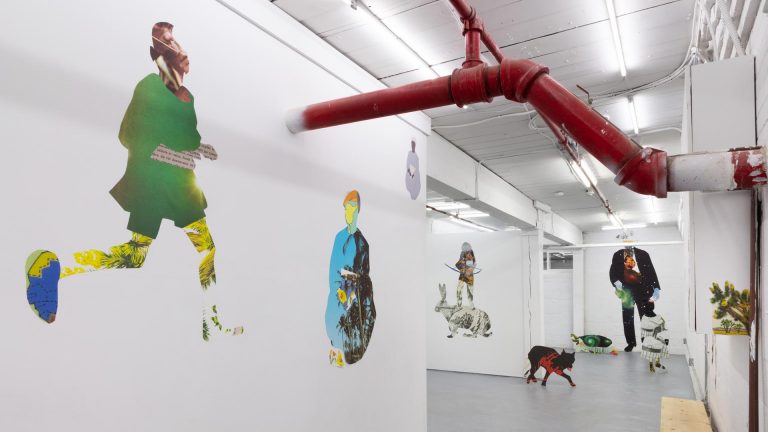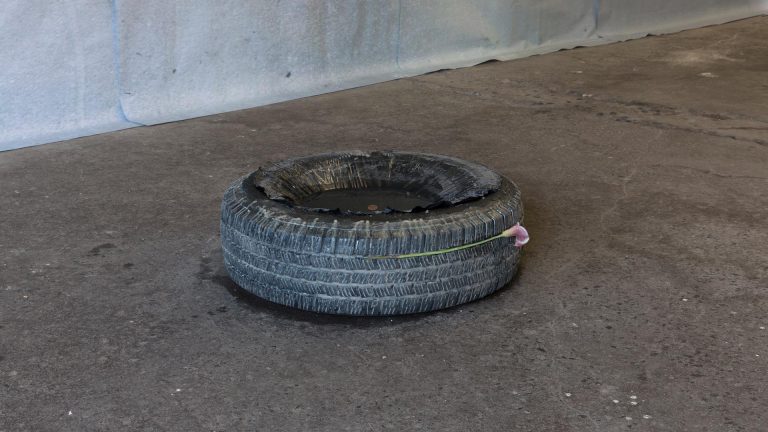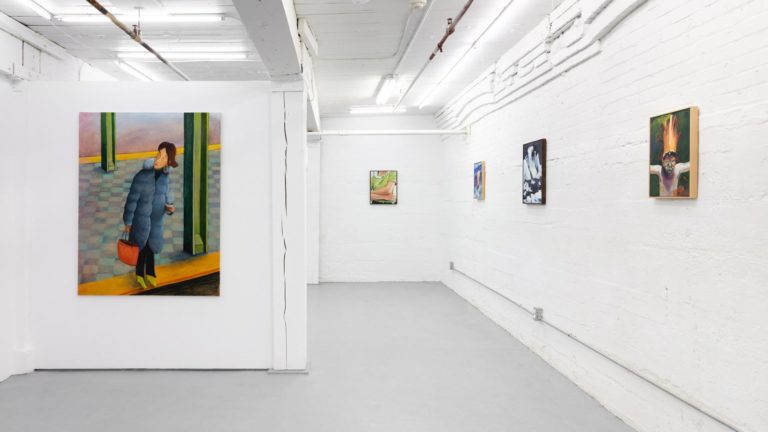Artists: Harold Ancart, Sascha Braunig, Holly Coulis, Julia Dault, Oreka James, Paul P., Lawrence Paul Yuxweluptun Lets’lo:tseltun
Exhibition title: Sculptures by Painters
Venue: Daniel Faria Gallery, Toronto, Canada
Date: October 2 – November 6, 2021
Photography: all images copyright and courtesy of the artists and Daniel Faria Gallery, Toronto
This fall marks the Daniel Faria Gallery’s 10th anniversary. To celebrate the occasion and in thinking about the upcoming ten years, the gallery has planned for various projects that will be introduced throughout the 2021-2022 season. The first of these initiatives is an exhibition schedule that will feature a year of programming with invited artists, launching with a group show opening October 2, 2021.
“Sculptures by Painters” features work by Harold Ancart, Sascha Braunig, Holly Coulis, Julia Dault, Oreka James, Paul P., and Lawrence Paul Yuxweluptun Lets’lo:tseltun. By virtue of its title, this exhibition asks us to look at works in relation to paintings that are not on view. When thinking about that relationship to the unseen, we might think about the space between representation and abstraction, and the ways in which that space is palpably different in three dimensions. We might think about the effects of light captured in paint versus light moving around a piece of brass or copper. Removing these sculptures from the context of painting altogether, we might think about what a curve does and what an angle does to that light, how we can never see all sides simultaneously. We might think about the maquette and the monument; architecture, furniture, and objects we encounter every day. We might also think about how objects are used, held, touched, and moved, and how they can operate as tangible stand-ins for the intangible.
Certain artists in this exhibition use three dimensional forms as structures onto which paint is applied, as if physically pushing their paintings into space. In Lemon Fold Four, Holly Coulis plays with geometry and colour-fields from multiple axes, while Harold Ancart’s small plywood handball court (originally a maquette for a painting on a life-size handball court) becomes the surface for a show of vivid abstractions. Lawrence Paul Yuxweluptun Lets’lo:tseltun’s sculptures are also hand-painted, creating a texture of brushstrokes even in his monochromatic works. These works employ his distinctive use of the “ovoid,” a traditional form in Northwest Coast art that he extricates in order to speak to land claims, the history of colonization, Aboriginal rights and self-government, environmentalism, and Native philosophy.
The three-dimensional form also offers a new way to engage with a work’s objecthood, its relation to the body, or its function and performance in the world. Oreka James’ works make reference to oral traditions, African-Caribbean folklore, ancient cultures, and animism, creating narratives of beings who transpose dimensions and objects that function as placeholders. Sascha Braunig’s Cuirasse, can act as “either a defensive shield or a means of defiance,” the corporeal aesthetic of her paintings made manifest in the curves and texture of the cast-bronze breast-plate. Julia Dault’s “hug sculptures” are literally formed through an interaction with the body: sheets of brass are squeezed, folded and hugged to form a series of sculptures that reference bodily constraint. Paul P. sees his sculptures as “allegorical; as more mannerist expressions of the conceit of my representational paintings.” The title Terminal Figure (from the architectural term for a bust or head carved out of the top of a square tapering pillar), imbues the work with the invisible presence of both a body and an ancient building.
“Sculptures by Painters” shares its title with a 1960 show at the Isaacs Gallery in Toronto. Unsurprisingly for the time, the exhibition included work by eight male artists: Dennis Burton, Graham Coughtry, Richard Gorman, Robert Hedrick, Robert Markle, Gordon Rayner, Michael Snow, and Robert Varvarande. This exhibition references the Isaacs Gallery show as a nod to local art history, while also acknowledging the gaps in that history, and thinking about the important shifts that have taken place in the last sixty years, and those that still need to take place going forwards.
Sculptures by Painters, 2021, exhibition view, Daniel Faria Gallery, Toronto
Sculptures by Painters, 2021, exhibition view, Daniel Faria Gallery, Toronto
Sculptures by Painters, 2021, exhibition view, Daniel Faria Gallery, Toronto
Sculptures by Painters, 2021, exhibition view, Daniel Faria Gallery, Toronto
Sculptures by Painters, 2021, exhibition view, Daniel Faria Gallery, Toronto
Sculptures by Painters, 2021, exhibition view, Daniel Faria Gallery, Toronto
Sculptures by Painters, 2021, exhibition view, Daniel Faria Gallery, Toronto
Sculptures by Painters, 2021, exhibition view, Daniel Faria Gallery, Toronto
Sculptures by Painters, 2021, exhibition view, Daniel Faria Gallery, Toronto
Sculptures by Painters, 2021, exhibition view, Daniel Faria Gallery, Toronto
Sculptures by Painters, 2021, exhibition view, Daniel Faria Gallery, Toronto
Sculptures by Painters, 2021, exhibition view, Daniel Faria Gallery, Toronto
Sculptures by Painters, 2021, exhibition view, Daniel Faria Gallery, Toronto
Sculptures by Painters, 2021, exhibition view, Daniel Faria Gallery, Toronto
Sculptures by Painters, 2021, exhibition view, Daniel Faria Gallery, Toronto
Sculptures by Painters, 2021, exhibition view, Daniel Faria Gallery, Toronto
Sculptures by Painters, 2021, exhibition view, Daniel Faria Gallery, Toronto
Sculptures by Painters, 2021, exhibition view, Daniel Faria Gallery, Toronto
Sculptures by Painters, 2021, exhibition view, Daniel Faria Gallery, Toronto
Sculptures by Painters, 2021, exhibition view, Daniel Faria Gallery, Toronto
Sculptures by Painters, 2021, exhibition view, Daniel Faria Gallery, Toronto
Sculptures by Painters, 2021, exhibition view, Daniel Faria Gallery, Toronto
Holly Coulis, Lemon Fold Four, 2021, Oil on MDF core 161/4x14x123/8inches
Oreka James, Untitled, 2021, Fabric on plywood, brushed aluminum, motor 48×201/2×151/4inches
Sascha Braunig, Cuirasse, 2016, Cast bronze with red patina, 123/4x11x4inches











